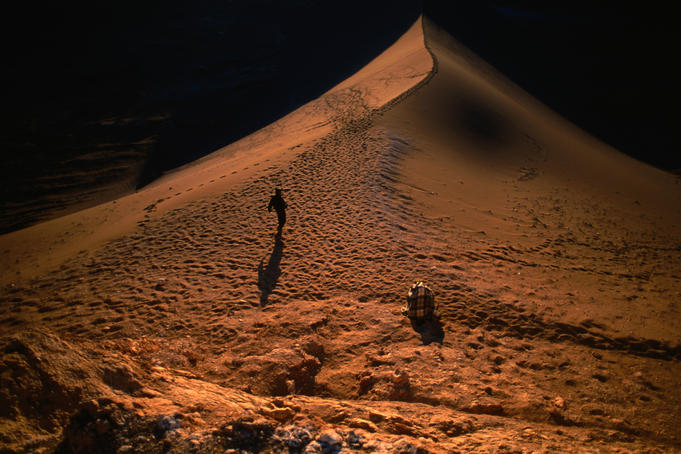
One of the largest gypsum surfaces in the world, spreading nearly 10,000 sq. km from the sand sea north to the Swakop River.
It is believed the gravel plains' history begins in the sea.
This theory states the Benguela's pantry of plankton is costantly recycling, dying, and drifting to the bottom of the seabed, where the decomposing material releases hydrogen sulphide into the atmosphere.

In the atmosphere it combines with the oxygen to produce a diluted sulphuric acid.
Fog from the coast then transfers this to the alkaline calcrete of the gravel plains.
The exchange of molecules, as an acid and alkaline mix, creates the gypsum that makes the gravel plains so unique.

Over some 80 million years of weathering and erosion, slicing the gypsum surface into a series of inhospitable canyons, resembling the surface of the moon.
The Moon Landscape
When viewing this Moon Landscape, remind yourself that in early history, the earth's surface was at least a kilometer above where you are standing.
Together water, wind, temperature, chemical, and biological erosion took sediment out to sea.

Nessun commento:
Posta un commento